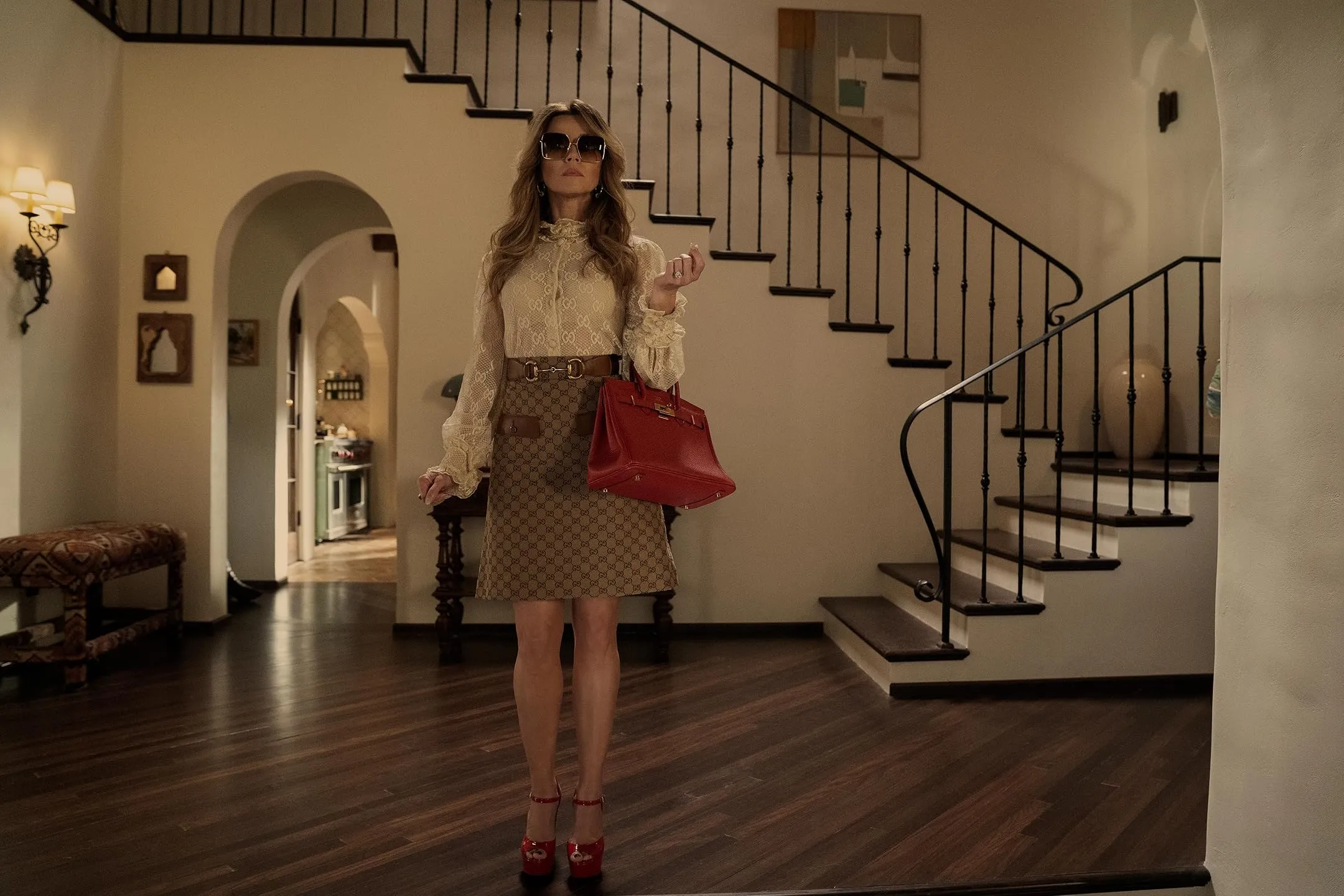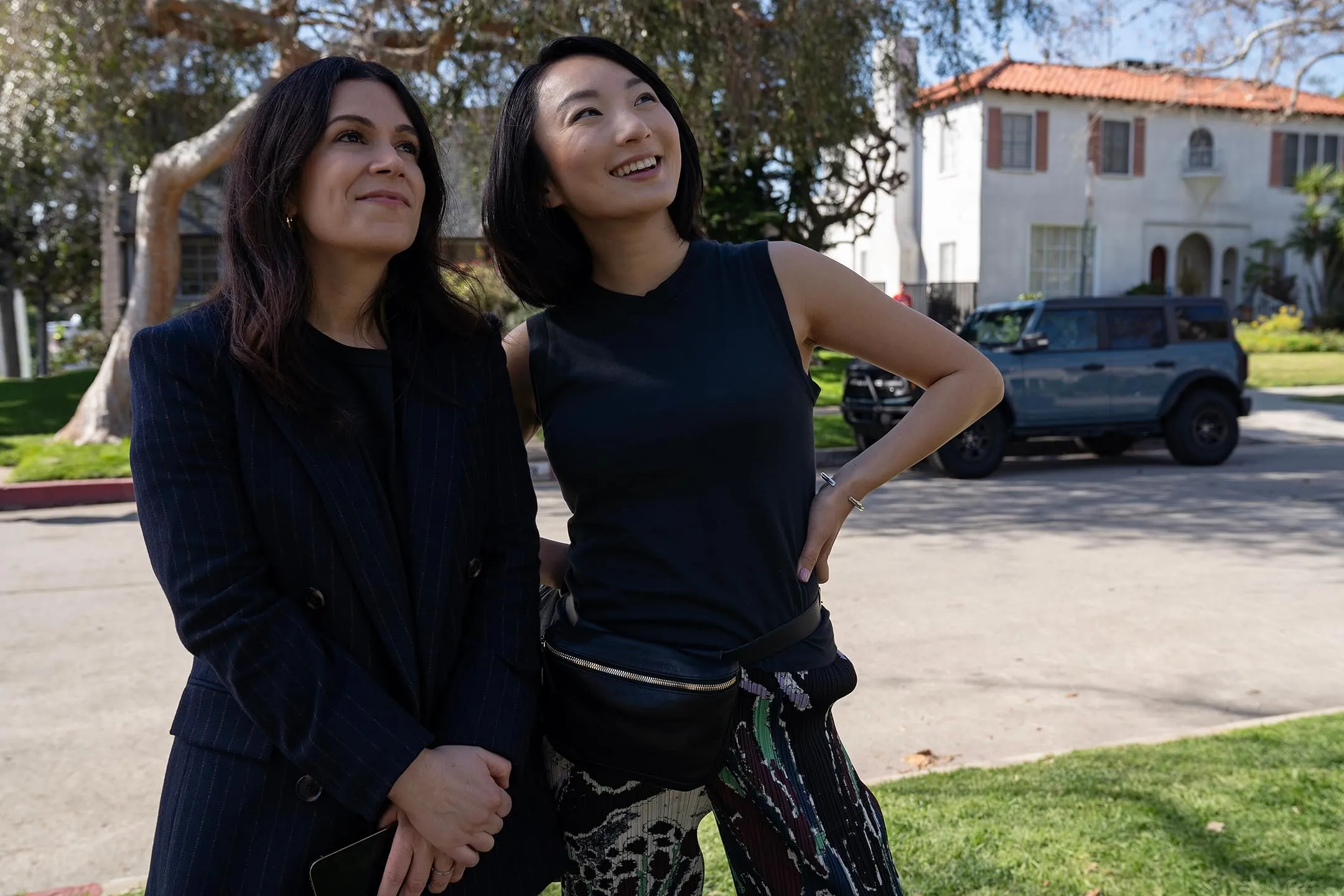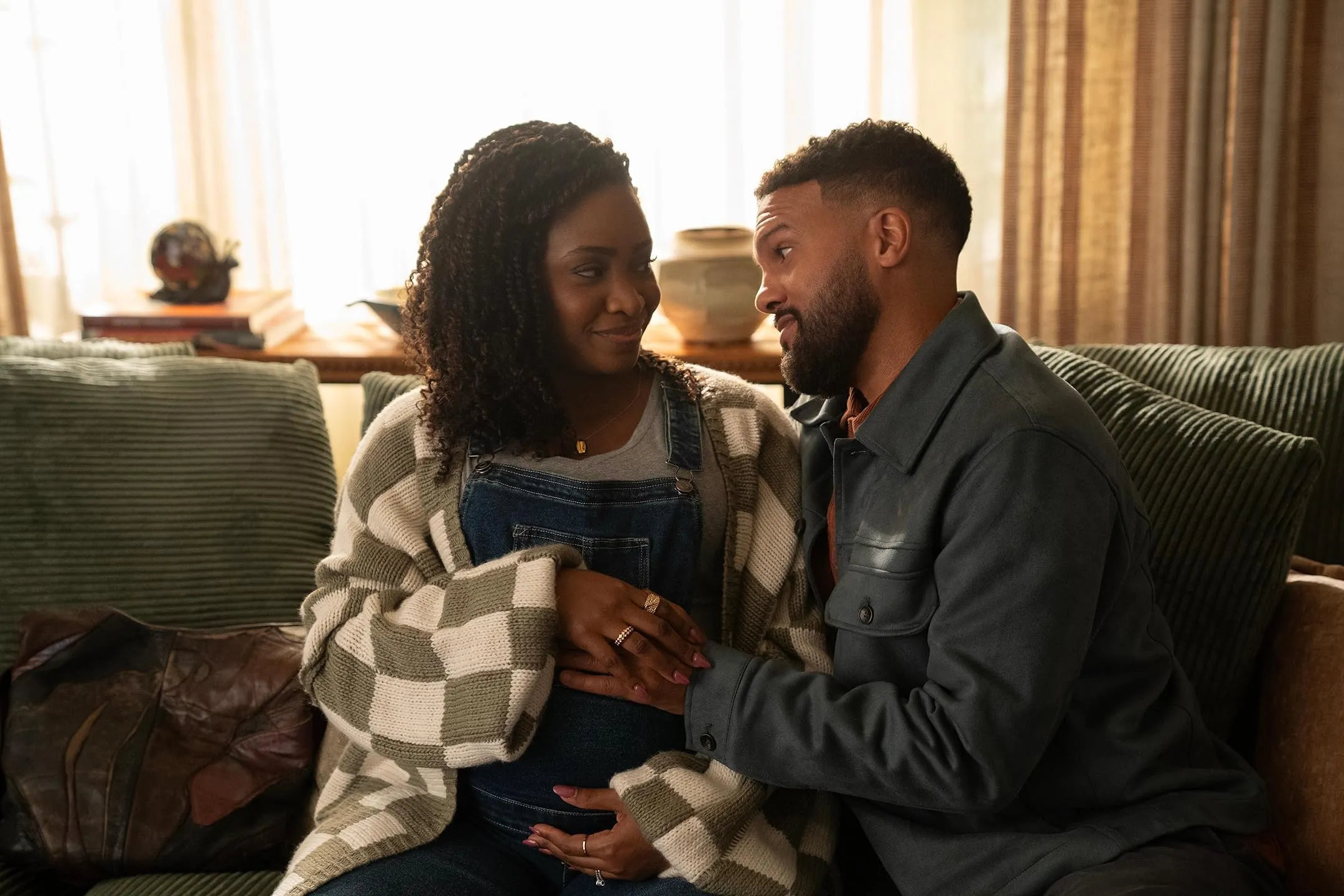In No Good Deed, we find ourselves in the sun-soaked mayhem of Los Angeles, where the goal of homeownership becomes a frightening narrative thread. Paul (Ray Romano) and Lydia (Lisa Kudrow) Morgan are not simply selling a house; they are also striving to discharge the emotional weight of a grief-stricken life. Their Spanish-style mansion, tucked in the coveted Los Feliz area, serves as a bittersweet reminder of family joy and terrible loss.
As they conduct an open house, we are dragged into a world where every visitor is both a potential buyer and a voyeuristic observer of their misery. This dichotomy—between the appeal of a dream home and the shadow of a past tragedy—is keenly felt by anybody who has ever grappled with the concept of home as both a refuge and a prison.
Liz Feldman, the mastermind behind this rich tapestry, is no stranger to merging humor with heartbreaking subjects, as proven by her previous hit, Dead to Me. That series brilliantly negotiated the dark seas of grief and friendship, and while No Good Deed attempts a similar alchemy, it frequently falters under the weight of its ambitions.
This series, available on Netflix, invites viewers to binge-watch for amusement and to explore how we reconcile our pasts with the never-ending march of life. However, I can’t help but wonder if Feldman’s well-known formula—dark comedy wrapped around tragic backstories—has become a double-edged blade.
Is it feasible to connect with these ideas without feeling like we’re treading familiar ground? A persistent sense of déjà vu hangs over the narrative, and I find myself questioning whether it’s deliberate or just the effect of creative tiredness.
Echoes of Grief: The Morgans’ Dilemma
In the core of No Good Deed, Ray Romano’s Paul and Lisa Kudrow’s Lydia represent the complex dance of mourning and moving on. Romano’s distinctive blend of humor and melancholy creates an approachable and tragically broken character. Paul, a contractor, is torn between the impulse to retain memories and the desperate need to escape them.
His struggle is apparent and resonates with anybody who has faced the arduous process of letting go—whether of a physical location or the ghosts that linger within it. Romano’s portrayal is vulnerable, inviting us to ponder our own pasts and making us question how much of our identity is related to the locations we live in.
Kudrow, on the other hand, gives a masterful performance of emotional complexity. Lydia’s grief is more than just a backdrop; it is the driving reason behind her character. It is heartbreaking to watch her grapple with the loss of her son while clinging to the shreds of her life.
The moments when she reaches for her piano only to retreat in despair reflect the hardships of many frozen by grief. Lydia exemplifies a woman’s vulnerability as she struggles to balance the weight of her memories with the pressure to go on. Her performance echoes my own experiences with loss, reminding me that grief is not linear nor easy to navigate.
The supporting cast, which includes stars like Linda Cardellini and Luke Wilson’s son, adds complexity to this narrative. The Morgans’ downbeat voyage is starkly contrasted by Cardellini’s Margo, with her blend of ambition and desperation. Wilson’s JD, a washed-up soap star, adds a dash of dark humor to the otherwise somber tone.
Nevertheless, I find myself grappling with the ensemble’s lack of growth. While these characters are entertaining, they frequently feel like sketches rather than fully developed personalities. This raises an unpleasant question: Are we so invested in the Morgans that we ignore the world’s richness? While the ensemble dynamics are intriguing, at times, they feel like plot devices, magnifying the Morgans’ anguish rather than standing alone.
The Weight of Memory: Grief and Connection
No Good Deed delves deeply into the dark rivers of grief, investigating how loss alters our identities and decisions. The series expertly conveys the weight of mourning that Paul and Lydia Morgan bear like a veil over their once-vibrant lives.
Their attempts to sell the family house serve as a metaphor for their struggle to let go—not only of the physical structure but also of the memories that haunt every corner. I found myself reflecting on my own experiences with loss and how it clings to familiar places, making even mundane moments feel fraught with emotion.
The Morgans’ past, particularly their son’s sad death, hangs over their every interaction, impacting decisions that would otherwise appear obvious. As they navigate the real estate market, seeking closure through the sale, we see how grief can tear at the very fabric of relationships. It raises the question of whether one can fully move on without confronting the ghosts of the past.
Beyond secrets, the series deftly builds a narrative of relationships plagued by lies and grief. Each character has their problems, and the plot finds its rhythm in the interplay of these hidden realities.
The tension between honesty and dishonesty pulls the drama onward, creating a maze of captivating and oppressive connections. I sometimes struggled to keep track of these connections, wondering if the weight of all these secrets would eventually unravel the narrative. However, there is something unmistakably human in this chaos—an examination of how we conceal our weaknesses with falsehoods to protect ourselves and those we love.
The Rhythm of Secrets: Navigating the Narrative
No Good Deed’s narrative framework feels familiar and unfamiliar, reflecting the characters’ turbulent lives. The series is told in interweaving episodes, with each episode aiming to keep us wondering while allowing us to linger in the Morgans’ emotional agony.
This shift between the personal and plot-driven frequently feels like a double-edged blade. On the one hand, it offers participation by drawing us into the depths of their secrets and the larger tapestry of their lives; on the other, it can leave us panting for clarity amid the tornado of characters and subplots.
Pacing, in particular, is a source of dispute. There are moments when the tale flows fluidly, capturing the viewer’s attention with a deft touch, yet there are stretches that feel sluggish, weighed down by excessive history or too intricate setups. I questioned whether the series attempted to weave complicated threads too aggressively, risking losing the spectator. It reminds me of how we might sometimes spend too much time in our own heads, caught up in the repercussions of past decisions as the present fades.
Meanwhile, the twists and turns are intended to be shocking, but they occasionally fall short. As secrets are revealed with a flourish, I can’t help but wonder if they were intended to surprise or distract from deeper emotional truths.
The balance between suspense and clarity feels tenuous; However, some turns hit with a gratifying thud, and others appear artificial, as if they were added to sustain curiosity rather than serve the story’s core. In my storytelling experiences, I have frequently grappled with this tension: how to create suspense without losing the thread of authenticity that holds the narrative together.
The Dance of Laughter and Loss
No Good Deed uses humor as a coping strategy and a narrative device, weaving through the shadows of grief and misery. The dark humor aspects are often crisp, breaking through the gravity with moments of laughter that feel almost necessary in such a sad plot.
I reflect on how laughter can serve as a balm for the soul, a brief diversion from the weight of reality. One particularly memorable scenario had Paul and Lydia watching possible buyers at their open house, snacking on popcorn like spectators in a strange theater. This ridiculousness emphasizes their detachment and desperation, demonstrating the series’ capacity to juxtapose the silly and the tragic.
Yet, herein lies a tension with which I grapple: can humor coexist legitimately with such important themes? While some humorous moments feel jarring—like attempting to laugh at a funeral—others feel masterfully executed. Sometimes, the transitions from comedy to drama feel sudden, leaving me to ponder whether the tonal inconsistencies lessen the emotional impact. I’m left questioning whether the series genuinely understands the delicate balance between these two domains or if it merely flits between them without providing adequate context.
The tonal shifts frequently challenge my attention. I want to enjoy the ridiculousness of the characters’ situations but also go deeper into their emotional landscapes. As I navigate these moments, I can’t help but wonder if the series’ producers are genuinely dedicated to this dance of laughter and loss or if they’re simply experimenting with genre-bending without a clear plan.
Framing Grief: Visual Storytelling in No Good Deed
No Good Deed’s visual aesthetics provide an intriguing backdrop for the intricate emotional tales at play. The cinematography depicts the sun-drenched surroundings of Los Angeles, framing the city’s splendor as both seductive and oppressive.
The camera lingers on the Morgans’ home, a lovely Spanish-style estate that becomes a character in and of itself. It’s as if the house bears the weight of their happy and tragic memories. In moments of calm reflection, the framing and lighting create a distinct sense of longing, enabling viewers to immerse themselves in the emotional undercurrents that run beneath the surface.
However, I wonder if the cinematography did more than merely enrich the narrative by romanticizing the characters’ struggles. The lavish images can distract from the gravity of their circumstance, making it impossible to truly comprehend the depths of their grief. I found myself grappling with this dichotomy: Is the beauty of the surroundings a soother or a gloss over the rawness of their suffering?
Furthermore, the picture of the Los Angeles real estate market acts as a cutting criticism of aspiration and delusion. The Morgans are immersed in a world of groomed lawns and enormous estates, projecting a veneer of success that contrasts sharply with their inner torment. This juxtaposition raises troubling questions about the American Dream, leaving me to ponder how much of our lives we shape to meet societal standards, even while we crumble internally.
Reflections on No Good Deed
No Good Deed navigates the difficult interplay of grief and humor, creating a world rich in emotional subtlety yet riddled with tonal inconsistencies.
Even though the pacing and character development sometimes falter, Romano and Kudrow’s outstanding performances hold the narrative.
The breathtaking images highlight the characters’ inner agony, raising deeper themes about aspiration and authenticity.
The series grapples with its identity, but it eventually challenges viewers to consider their own experiences with loss and connection. This series may appeal to those looking for a blend of dark comedy and profound drama, even if it occasionally stumbles.
The Review
No Good Deed
No Good Deed is an intriguing investigation of grief cloaked in dark comedy, with standout performances from Ray Romano and Lisa Kudrow. While the series excels at visual storytelling and emotional depth, it occasionally stumbles with pacing and tonal inconsistency. Although thought-provoking, the interplay of humor and tragedy can leave viewers grappling with estrangement. Finally, it's a flawed but compelling voyage that encourages contemplation on the intricacies of loss and aspiration.
PROS
- Strong performances by Ray Romano and Lisa Kudrow.
- Engaging exploration of grief and emotional complexity.
- Visually striking cinematography that enhances storytelling.
- Darkly humorous moments that provide levity.
CONS
- Inconsistent pacing that can disrupt viewer engagement.
- Tonal shifts between comedy and drama may feel jarring.
- Some supporting characters lack depth and development.
- Plot twists can feel contrived or predictable.




















































